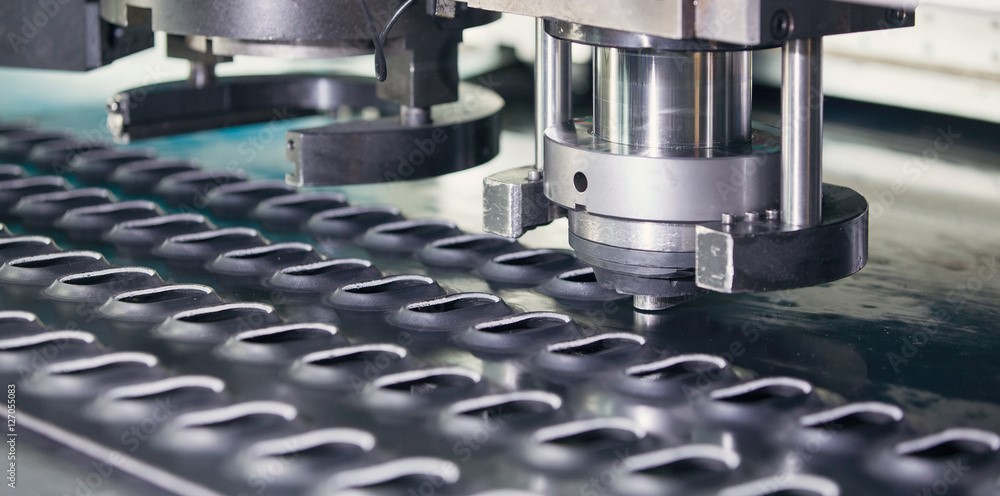The aerospace sector is a marvel of human engineering, where accuracy, innovation, and reliability come together in the sky above. Its core is sheet metal production, an unsung hero that pushes the limits of performance while allowing airplanes to fly safely. Technological developments in metalworking have transformed what is feasible in aircraft, from space research vehicles to commercial airplanes, resulting in an intriguing fusion of traditional workmanship with state-of-the-art production methods.

Lightweight Solutions for Fuel Efficiency
Extremely lightweight components that are essential to aircraft fuel economy may be produced with sheet metal fabrication. Manufacturers produce structural components that are as strong as possible while weighing as little as possible by using materials like titanium, aluminum, and specialty alloys. China is becoming a major participant in the development of new alloys especially made for aerospace uses, and maintaining this balance is crucial for lowering aircraft fuel consumption.
Precision Engineering for Safety Standards
Manufacturing in the aerospace sector requires previously unheard-of levels of accuracy, with tolerances frequently expressed in microns. So modern CNC machining, laser cutting, and inspection technologies have helped sheet metal processes adapt to these demanding specifications. Every part, from internal brackets to fuselage panels, adheres to strict safety regulations since even minor flaws might cause catastrophic breakdowns under extreme flying circumstances. According to NASA’s material specification guidelines, sheet metal used in aircraft must meet strict aerospace-grade standards.
Thermal Management Solutions
Aircrafts experience extreme temperature variations, ranging from harsh heat near engines to below-freezing temperatures at high altitudes. Innovative designs for specialized sheet metal components, such as thermal expansion joints, ventilation systems, and heat shields, are developed to handle these thermal problems. Chinese producers have led the way in developing novel methods for sheet metal heat control, greatly advancing both commercial and military aerospace applications.
Complex Geometries for Aerodynamic Performance
Complex aerodynamic designs that would be hard to create using conventional manufacturing procedures can now be created using modern sheet metal manufacturing techniques like hydroforming, superplastic forming, and multi-axis deep drawing. These advanced parts increase aircraft stability, decrease drag, and increase fuel efficiency. The possibilities for aeronautical design have been transformed by the capacity to create intricate shapes without sacrificing structural integrity.
Cost-Effective Production at Scale
For aircraft producers, sheet metal manufacturing provides exceptional economies of scale, enabling them to create components effectively without sacrificing quality. China's ability to produce affordable sheet metal components without sacrificing quality or accuracy has revolutionized the global aerospace supply chain. While upholding the greatest safety requirements, this efficiency has contributed to the affordability and accessibility of modern aviation.
Final Words
As new materials and manufacturing processes are developed, the connection between sheet metal production and aeronautical progress keeps evolving. With the regular manufacturing of intricate aerospace components made possible by precision molds, the function of mold manufacturing in this ecosystem is growing in importance. The aerospace sector will continue to gain from advancements in sheet metal production as materials science and manufacturing technology advance.
FAQs
Which metals are most often used for sheet metal fabrication for aeronautical applications?
Stainless steel, titanium, nickel-based superalloys, and aluminum alloys are the most often used materials; they are all selected for their unique strength-to-weight ratios and resilience to temperature.
Which tolerances are common for sheet metal parts used in aerospace?
Critical flight control components need precision down to ±0.0005 inches, whereas aerospace components usually require tolerances of ±0.005 inches or finer.
What effect does sheet metal production have on aircraft weight?
When compared to traditional manufacturing techniques, advanced sheet metal production allows for weight reductions of 15–30%, which immediately improves aircraft range and fuel economy while preserving structural integrity.
















